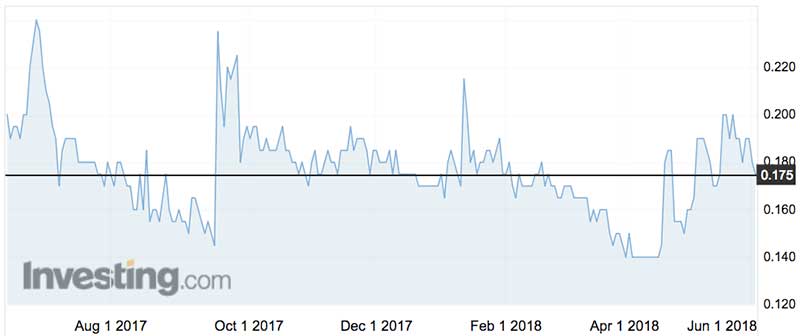The biotech veteran chasing a billion-dollar pot of gold

Pic: sinology / Moment via Getty Images
He was famously worth over $130 million — on paper at least — when he was running Chemeq, which blew itself up a decade ago after he left.
Now Graham Melrose is back — this time eying a $US1 billion payoff for his new vehicle, Recce Pharmaceuticals (ASX:RCE), if it can develop a new generation of antibiotic drug to beat the superbug.
It’s a little-known fact that more people died from the Spanish flu in 1918-19 than were killed in the Great War.
And the over-prescription of antibiotics has boosted concerns in medical circles that we may soon face another pandemic similar in scale to the Spanish flu pandemic.
Poor returns from antibiotics have prompted the drug majors to wind back their research in this field, which has triggered mounting concern in public health circles that tens of millions could die in the next pandemic, as more superbugs emerge which are resistant to existing antibiotics.
As a result, a number of bodies including the Bill & Melinda Gates Foundation have banded together to put more than $US500m into a global initiative, dubbed Combating Antibiotic-Resistant Bacteria Biopharmaceutical Accelerator (CARB-X).
This initiative is halfway to its goal of raising $US1 billion to reward developers of new antibiotics.
“That is clearly an enticement,” said Recce executive director James Graham of the funds on offer — and the prospect that his company could be in the running for part of that if it succeeds in its research and development efforts.
The grandson of Dr Melrose, James Graham kick-started Recce — putting in the initial funds to get it off the ground — after Dr Melrose showed him research advances he had made in developing a synthetic antibiotic.
“He was tinkering in retirement,” Graham said of Dr Melrose’s work which Recce is seeking to commercialise.
Dr Melrose “was worth over $130 million” when Chemeq — which he had launched — was making good progress with its development program a decade ago.
But he didn’t sell a single share.
“As a good captain, he went down with the ship,” Mr Graham says.
Even though Dr Melrose had moved on from Chemeq by the time it began to founder, he felt he couldn’t sell his holding in the company, concerned it would affect adversely developments at the company.
Chemeq collapsed a decade ago. At its peak it was worth more than $500 million.

Recce has developed a synthetic antibiotic and the US FDA is reviewing the planned clinical testing program, with a positive response to open the door for the first round of clinical testing which will be focused on safety before a second round of testing, focused on efficacy, is commenced.
Recce has already received so-called qualified infectious disease product designation from the FDA which ensures expedited by the agency along with ten years of market exclusivity, as incentives for the development of antibiotic resistant treatments.
Optimistically, Recce could be in a position to seek approval for its treatment, if clinical trials are successful, in less than four years, Graham said. Recce went public raising just $5 million, less than two years ago, and will need another large lick of money to get the clinical trials running.
Each of the first and second stage testing will take an estimated 12 months to conclude.
- Bookmark this link for small cap breaking news
- Discuss small cap news in our Facebook group
- Follow us on Facebook or Twitter
- Subscribe to our daily newsletter
UNLOCK INSIGHTS
Discover the untold stories of emerging ASX stocks.
Daily news and expert analysis, it's free to subscribe.
By proceeding, you confirm you understand that we handle personal information in accordance with our Privacy Policy.








